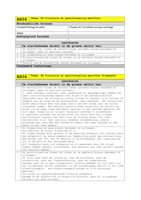Class notes
CO2401 Software Development Lecture 12 Notes
- Course
- Institution
This document contains detailed notes from Lecture 12 of the CO2401 course on Software Development. The lecture focuses on advanced unit testing techniques, specifically the use of mocking frameworks to simulate and test interactions between a unit of code and its dependencies.
[Show more]












